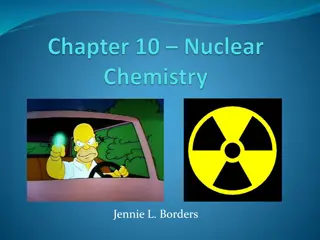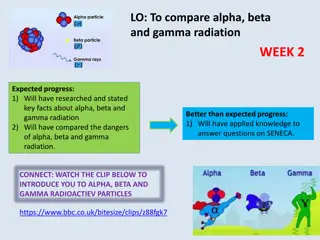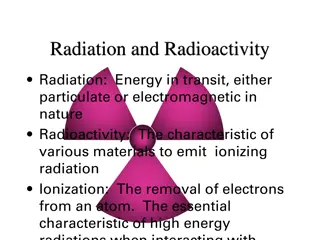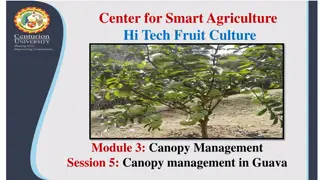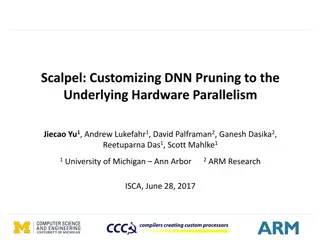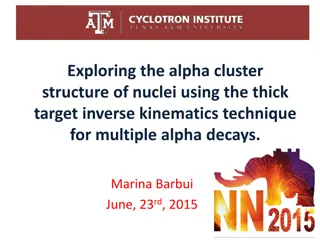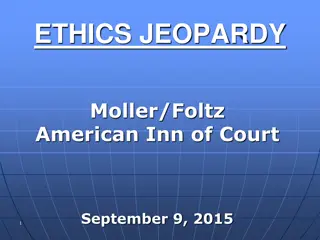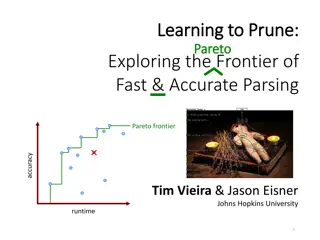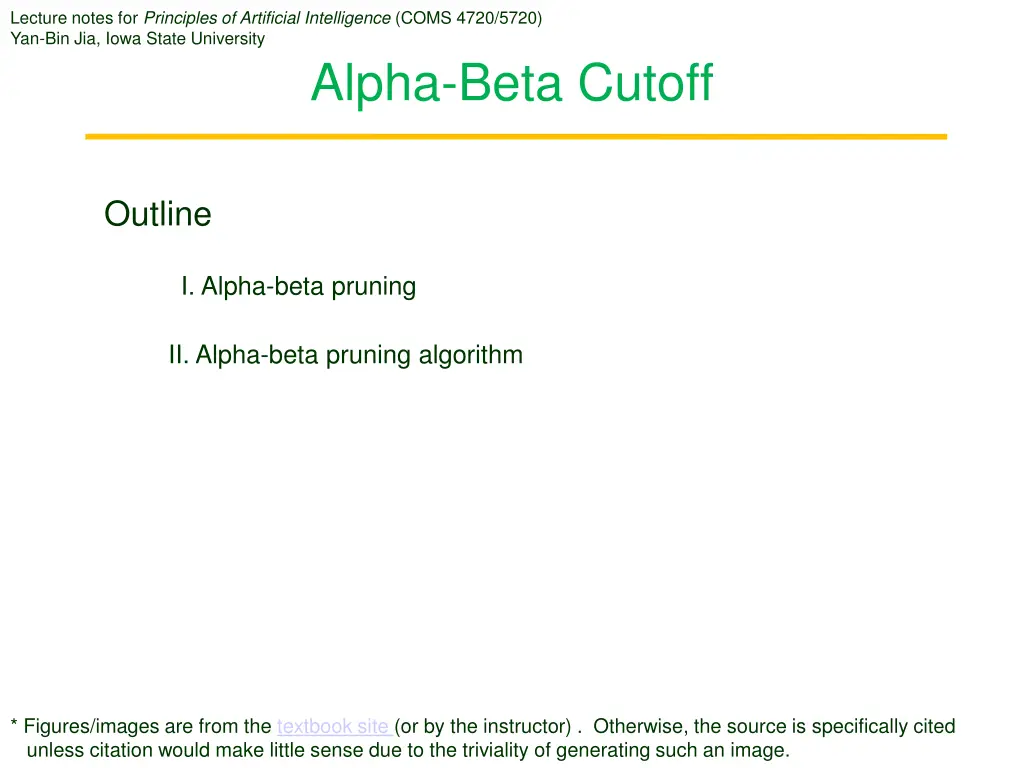
Principles of Artificial Intelligence Lecture Notes on Alpha-Beta Cutoff for Game Trees
Explore the concept of Alpha-Beta pruning in Artificial Intelligence, where the player can avoid visiting parts of the game tree that do not impact the final outcome. Learn about node pruning, Alpha and Beta values, and practical examples to understand the optimization of game tree traversal.
Download Presentation

Please find below an Image/Link to download the presentation.
The content on the website is provided AS IS for your information and personal use only. It may not be sold, licensed, or shared on other websites without obtaining consent from the author. If you encounter any issues during the download, it is possible that the publisher has removed the file from their server.
You are allowed to download the files provided on this website for personal or commercial use, subject to the condition that they are used lawfully. All files are the property of their respective owners.
The content on the website is provided AS IS for your information and personal use only. It may not be sold, licensed, or shared on other websites without obtaining consent from the author.
E N D
Presentation Transcript
Lecture notes for Principles of Artificial Intelligence (COMS 4720/5720) Yan-Bin Jia, Iowa State University Alpha-Beta Cutoff Outline I. Alpha-beta pruning II. Alpha-beta pruning algorithm * Figures/images are from the textbook site (or by the instructor) . Otherwise, the source is specifically cited unless citation would make little sense due to the triviality of generating such an image.
I. Alpha-Beta Cutoff #states is exponential in the depth of the game tree. But we can often compute the correct minimax decision by pruning large parts of the tree that do not affect the outcome.
Node Pruning The player will not move to node ? if it has a better choice either at the same level (e.g., ? ) or at any node (e.g., ?) higher up in the tree. Prune ? once we have found enough about it to reach the above conclusion.
Alpha and Beta Values Alpha-beta pruning gets its name from two extra parameters ?,? ? = the highest-value (i.e., the best choice) so far along a path for the player MAX. // MAX s best score so far. eventualvalue ? at least ? = the lowest-value (i.e., the best choice) so far along a path for the player MIN. // MIN s best score so far. eventualvalue ? at most Update the values of ? and ? as the search goes along. Prune the remaining branches at a MIN node with current value ? (because its parent, a MAX node, has from another child or is passed on the value ? already). at a MAX node with current value ? (because its parent, a MIN node, has or is passed on the value ? already).
Re-examining the Game Tree Fig. 5.5 in the 4th edition of the textbook incorrectly executes the algorithm ALPHA-BETA-SEARCH in Fig. 5.7. MIN node returns a value 3 possible range of the returned value ?,? = ( , ) ( , ) ( ,3] [ , ] ( , ) ( ,3]
Contd [3, ) [ , ] ( , ) [3, ) [ ,3] ( ,3] [ ,3] ( ,3] [3, ) 2 < 3 (no change in ? value) pruned
Contd 2 < 3 [3, ] [3, ) [3, ] [3, ) (no change in ? value) ( ,3] [3, ) ( ,3] [3, ) [3, ] [3,5] [3,14] [ , ] [3, ] [3, ) [3,14] MINIMAX(root) = max(min(3,12,8), min(2,?,?), min(14,5,2)) = max(3, min(2,?,?),2) = max(3,?,2) where ? = min(2,?,?) 2 = 3.
A Larger Example (Wikipedia) Current min (5) at node < current max (6) at parent Current min value (4) < current max value (5) at parent; no need for further exploration Exercise (suggested): Trace the execution of ALPHA-BETA-SEARCH (next page) and dynamically update the [?,?] value of every expanded node.
II. Alpha-Beta Search Algorithm (3rd Edition of Textbook) function ALPHA-BETA-SEARCH(state) returns an action ? MAX-VALUE(state, ,+ ) return the action in ACTIONS(state) with value ? ? :[?,?] MIN MAX ?:[? ,?] // no change of ? value within MAX-VALUE() function MAX-VALUE (state,?,?) returnsa utility value if TERMINAL-TEST(state) then return UTILITY(state) ? for each ? in ACTIONS(state) do ? MAX(?, MIN-VALUE(RESULT(?,?),?,?)) if ? ?then return ? ? MAX(?,?) return? // maximum value of all children if none are pruned ? < ? < ? ? ? ? ? // pruning (returned ? will not affect parent s ? value). // ? < ?: new ? passed on to the remaining MIN-VALUE calls within the for loop. ? :[?,?] MAX // no change of ? value within MIN-VALUE() function MIN-VALUE (state,?,?) returnsa utility value if TERMINAL-TEST(state) then return UTILITY(state) ? + for each ? in ACTIONS(state) do ? MIN(?, MAX-VALUE(RESULT(?,?),?,?)) if ? ?then return ? ? MIN(?,?) return? // minimum value of all children if none are pruned. MIN ?:[?,?] ? // pruning (no change will occur to parent s ? value). // ? > ?: new ? passed on to the rest MIN-VALUE calls within the for loop. ? ?
Short Summary on the Algorithm Both MAX and MIN nodes Receive ? and ? values from the parent. Pass the best value of the executed actions back to the parent. MAX node Updates the ? value if one of its actions yields a better value. Does not update the ? value. Use the ? value to skip actions that do not affect the outcome. MIN node Updates the ? value if one of its actions yields a better value. Does not update the ? value. Use the ? value to skip actions that do not affect the outcome.
Move Ordering [3, ) [3, ) [3, ] [3,14] ( ,3] [3, ] ( ,3] [3,5] Successors 14 and 5 would ve been pruned had 2 been generated first. Effectiveness of pruning is highly dependent on the order in which successors are generated. Perfect ordering has effective branching factor ?, which limits examination to only ?(??/2) nodes compared to ? ?? for minimax. ?(?3?/4) nodes for random move ordering.
Two Strategies For chess, a simple ordering function (sequentially considering captures, threats, forward moves, backward moves) could get close to the best case. Even with alpha-beta pruning and clever move ordering, minimax won t work well enough for games like chess and Go due to their vast state spaces. Claude Shannon (1950) suggested two strategies: Type A (heuristic alpha-beta tree search) chess Considers all possible moves to a certain depth. Use a heuristic function to estimate utilities of states at that depth. Explores wide & shallow portion of the search tree. Type B (Monte Carlo tree search) Go Ignore moves that look bad. Explores deep but narrow portion of the search tree. Follow promising lines as far as possible .


